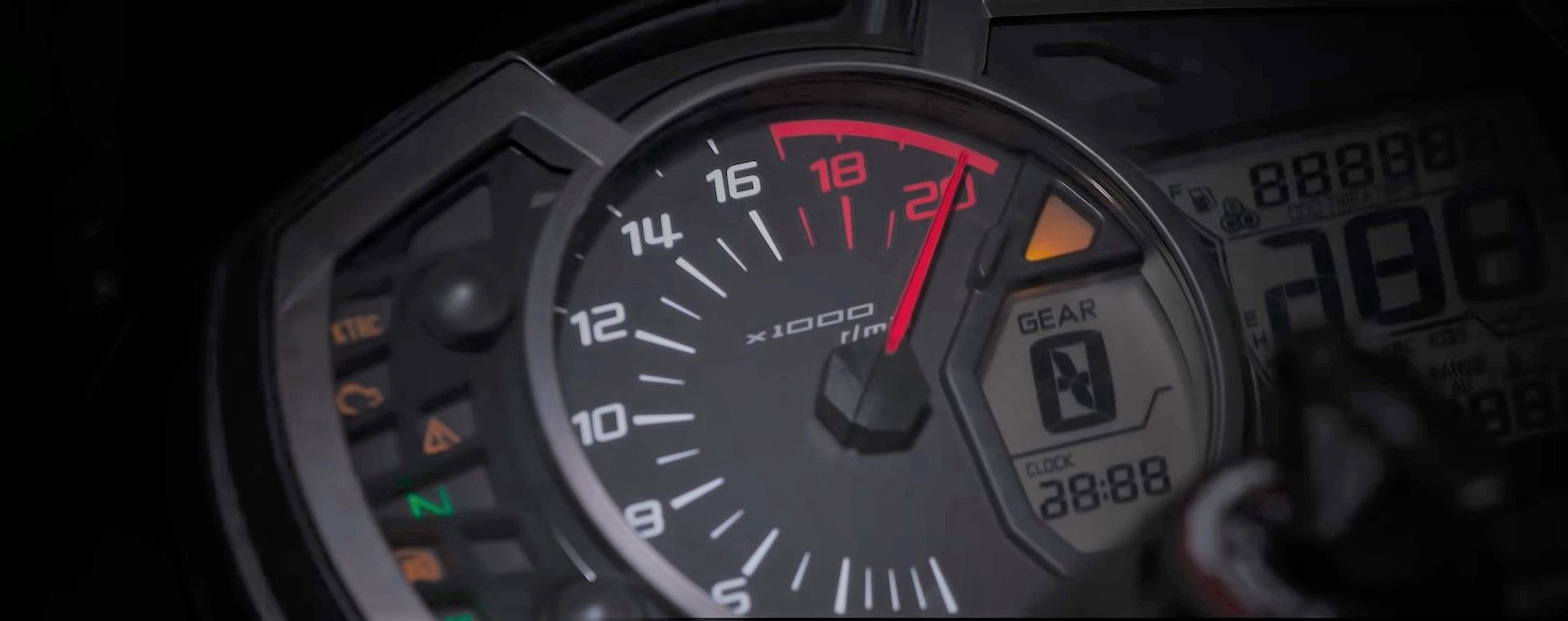Bringing back the sweet-four in a 250cc motorcycle after two decades, Kawasaki->ke299's all-new entry-level sportsbike will go against the likes of the Honda CBR 250RR and the Yamaha R25. The 2020 Kawasaki Ninja ZX-25R is touted to be the most prolific quarter-liter machine in the category with a top-spec equipment list, electronic aids, and a smothering power mill that has touted to be the highest-revving motorcycles on the market.
Revealed in a slew of videos by Kawasaki Indonesia, the dashboard comes with an LCD unit and an analog rpm meter that carries very little red, and it comes only after the 17,000 rpm mark. Their own master, the H2 comes with a 14,000 redline. This showcases the Japanese honcho’s engineering prowess to pull out such monstrosity out of a tiny four-pot mill.
However, it is not the first time the Green Team pulls out this bunny out of the hat. Back in 1988, Kawasaki had introduced the ZX-R 250 with a twin-spar aluminum frame, inverted fork, dual 300 mm front discs, and a larger 110/70-17 front and 140/60-18 rear size tires showing off some serious sporting instincts. These machines were only made available in Japan, and it redlined at 18000 rpm. Kawasaki also made an SP model, also known as the ZX-R 250R that revved all the way up to 20000 rpm.
Just like the 80s’ baby Ninja, the 2020 model also uses a 249cc inline-four-cylinder, liquid-cooled, 16 valve engine with Dual OverHead Camshaft (DOHC) that is said to make 46 hp of max power and 19 lb-ft of peak torque. And to squeeze out a 17,000 rpm limit is a feat only master craftsmen at Kawasaki could endeavor.
Racing feedback from Kawasaki’s championship-winning World Superbike 2 effort brings WSBK tech into this engine. To minimize inertia forces, they had to machine the components from lightweight materials and give them precision in jewel-like loveliness. The size of the components must also be small and assembled with the closest of tolerances and frictionless coating. “The interior of this engine is going to be more Swiss chronograph than motorcycle engine” – Visordown.
For the rest of the bike, the styling has been picked up from its elder siblings, the Ninja 650 in particular, and gets a ‘large-volume bodywork’ that offers better wind protection to the rider. It also shares the same instrument cluster with the Ninja 650 and gets LED all around. Making a debut in this class, the high-tensile steel trellis frame gets attached with Showa SFF-BP fork, horizontal back-link rear suspension, and radial-mount monoblock caliper. Electronic aids will include traction control, quickshifter, riding modes, and ABS.
We aren’t sure when this screamer will hit our shores, but be sure that the Asian markets will be the first ones to feast on them. Here, give it a listen:






